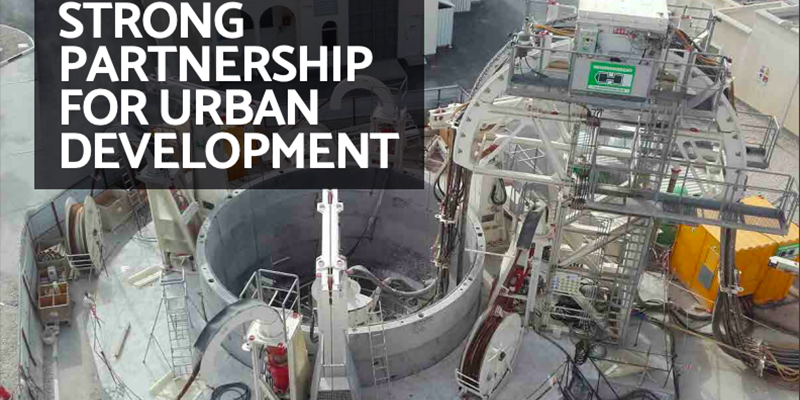Strong partnership for urban development
Publicerad: 22 december, 2021

Population growth goes hand in hand with the need for today’s cities to develop sustainable infrastructures for traffic, supply and disposal networks. As space is restricted on the surface, more and more utilities like power cables are moved underground. Existing sewage networks have to be expanded or new large-capacity schemes have to be built to meet future requirements in volumes or growing challenges in flood protection. Due to a rising density of underground installations, urban planners are considering new routes at greater depths.
This also applies to the metropolitan areas in the MENA region, where mechanized tunnelling solutions have been well-known for decades. Within large-scale projects such as Abu Dhabi’s Strategic Tunnel Enhancement Programme (STEP), a wide diameter range of AVN and EPB machines can be used to construct pipe jacking and segment lining tunnels safely and in time. The long tradition of pipe jacking, technological advance and valuable experience gained by the contractors create the desire to push the boundaries in terms of achievable drive length and tunnel diameter in pipe jacking. At the same time, small-diameter segment lining can be considered, as was the case for the Inner Doha Resewerage Implementation Strategy (IDRIS) project, where two EPBs for 3-meter inner diameters have completed more than 16 kilometers of sewage tunnels in 2018. Four shafts of up to 32 meters depth have been built within 9 months using the mechanized VSM shaft sinking technology.
In Saudi Arabia, several AVN machines are currently in operation for two large-diameter pipe jacking projects (up to OD 4,265 mm) for storm water networks. In Jeddah, the 4-km-long Al Salaam Tunnel is under construction as part of the Jeddah Storm Water and Master Plan (JSWM). In Buraidah, several AVN slurry machines are in operation to complete a total of approx. 22 km for the Main Line Stormwater project in depths of up to 50 meters.
In similar depths, Singapore is currently implementing Phase 2 of its Deep Tunnel Sewerage System. As a leading innovator in sustainable planning and managing its underground space to answer the lack of land above ground, Singapore counts on mechanized tunnelling and shaft sinking to realize the ongoing Phase 2 to the benefit of all parties involved. A total of 40 km of deep tunnels as main collectors are mainly constructed by Mixshields for segment lining in the diameter range of 3.5 to 7.5 meters (OD). Slurry pipe jacking equipment is predominantly used to install a total of 60 km of link sewers in the smaller diameter range below 3.5 meters. Some of the required tunnelling shafts of up to 60 meters in depth are sunk by a Herrenknecht VSM equipment, with a shaft diameter of 11.2 m (OD) and a combined lining of in-situ concrete and concrete segments.
After starting design and testing in early 2004, the first Herrenknecht VSM equipment went into operation in Kuwait and Saudi Arabia in 2006 for the construction of microtunnelling shafts for sewers in Kuwait and Jeddah. Until today, 98 shafts have been built worldwide by VSM technology in depths of up to 115 meters. The latest shafts installed in Nanjing, China, will serve as a U-Park® system for automatic underground parking.
Herrenknecht looks back on 30 years of experience in the MENA region, marked by a close partnership with customers, who have completed countless tunnelling projects successfully. With local service and reliable technology not only for tunnelling, but also for pipeline installations and shaft sinking, we do our best to provide solutions for ambitious future projects and their successful completion.